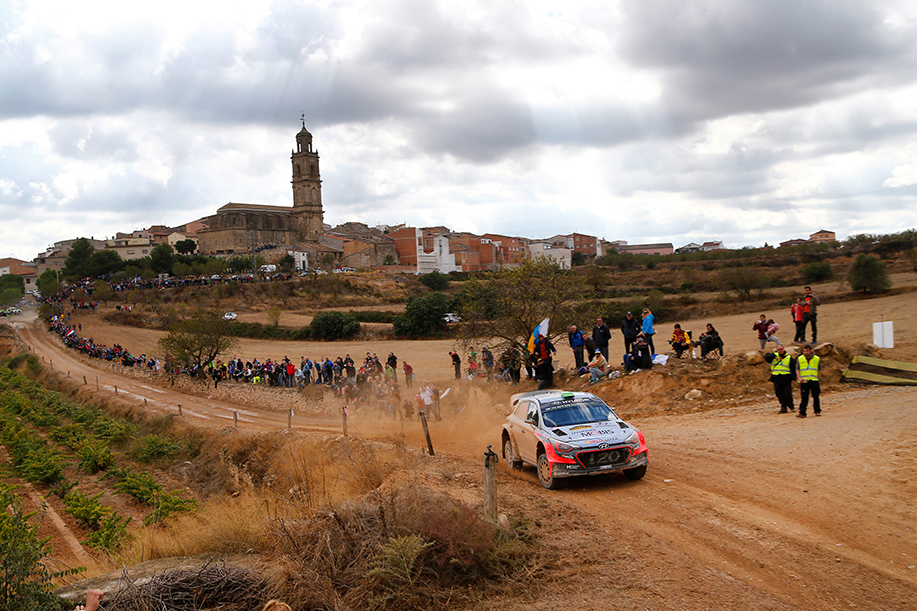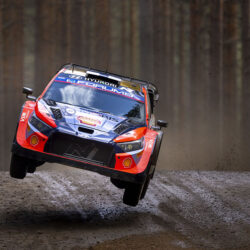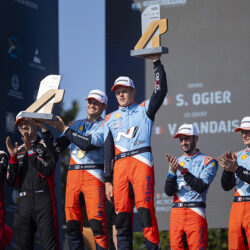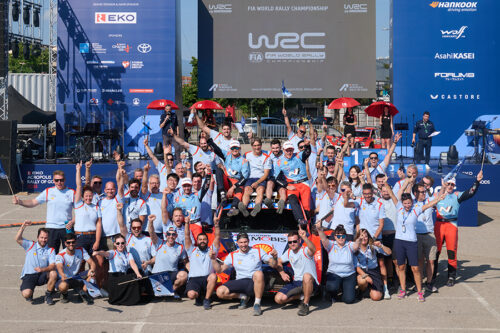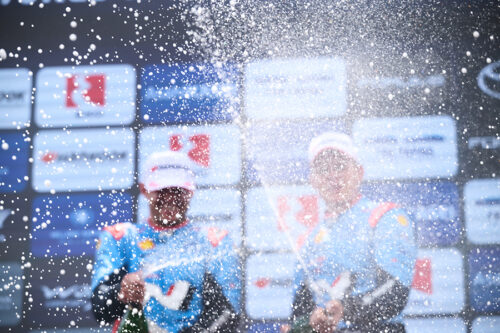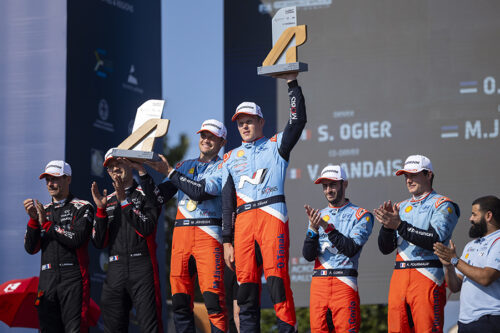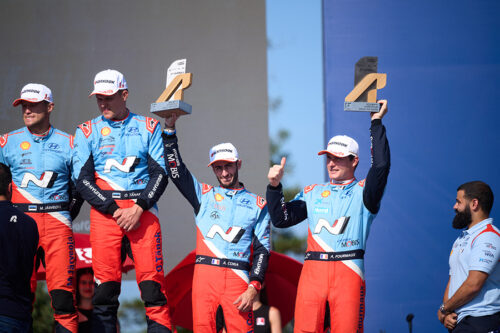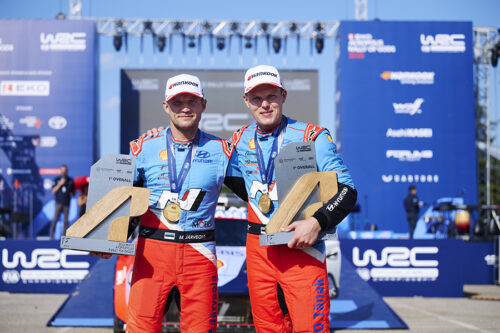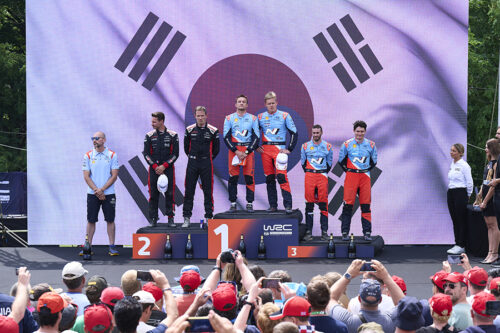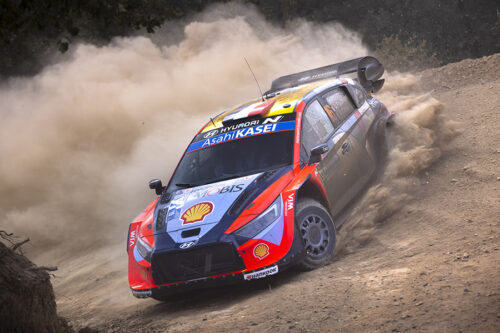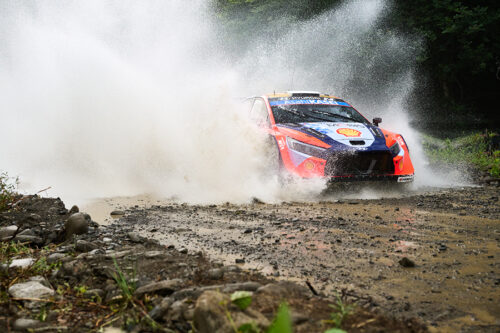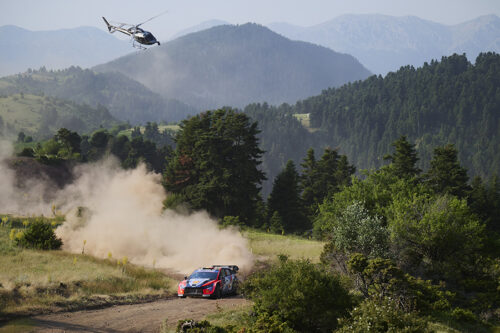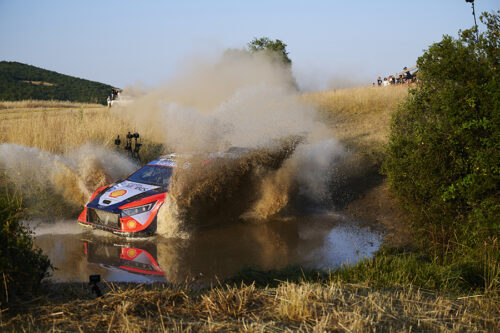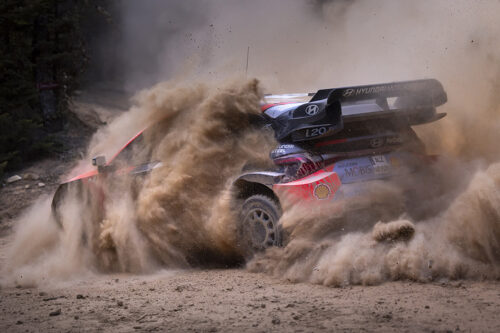Recce Updates McKlein’s Rally Tips have now been updated after our rally recce. You will be able to find the latest insights highlighted, to give you the most up-to-date overview for this rally.
A proper mix of gravel and asphalt makes Spain’s WRC round more like two rallies in one. Day one on Friday takes place on gravel roads, before a switch to asphalt for the stages run on both Saturday and Sunday. Even the event’s official title, ‘RallyRACC Catalunya – Rally de España’, reads like two different rallies, so for convenience, lets call this event Rally of Spain.
Whether it’s on two wheels or four, Spanish people love motorsports and with no admission (a ticket/pass isn’t needed) charges (a ticket/pass isn’t needed) for spectators to see the stages, you can expect massive crowds. Access into the stages is pretty good and, unlike most events, there are not so many closed road restrictions preventing your access. In Spain you are quite free to choose your locations.
The rally is based at the seaside tourist town of Salou, better known as home of the Port Aventura theme park, complete with its wild rollercoasters dominating the skyline. The Service Park is set up within Port Aventura’s car parking area and is open to all. The Friday night service is well worth a visit. Here the teams are given one hour and 15 minutes to totally rebuild each car from gravel to asphalt specification. You will be amazed at the amount of work that goes into this transformation.
Salou has a vibrant nightlife and is a town full of restaurants and bars to suit all tastes and budgets. There is an Irish bar close to the beach, which is very popular with rally people.

Thursday
Shakedown: Salou, 2.97km
This short shakedown test encapsulates the rally. The first kilometre is entirely on gravel, followed by two kilometres of pretty much flat-out, straight asphalt. The best places to watch are all within the first 1.2 kilometres. After 300 metres there is a jump on a left hand corner, which is always popular with the photographers because if there’s a visible sunrise then it appears clearly here. There are several tight corners in the section from km 0.6 – 0.9. Here the gravel stage sits in a natural bowl below road level and it can all be viewed from vantage points on this main road. The transition from gravel to asphalt occurs at km 1.0, where the stage enters a roundabout and the drivers complete a full loop of the circle. With the rally cars set-up for gravel, you see some tyre smoke as they hold long sideways slides here.

Friday
SS1/4: Caseres, 12.50km
The first part of this stage is quite narrow and slightly uphill. From km 8 it’s all downhill and very fast. The first interesting spot comes at km 6.8, where the cars fly sideways over a blind right-hand crest. For access to this you follow the N-420 road through Gandesa and the Coll del Moro. At kilometre marker 7.9, turn left onto a gravel road and follow for 1.9km. Next up, at 8km is a great place for spectating in a wind-farm. Firstly you can see a fast left-hand corner set amongst some olive trees. The terraced slopes of the olive grove offer great viewing platforms. Just a couple of hundred metres later is an ultra-fast left-right switchback over some wide crossroads. The access is similar to the previous point. This time turn left off the N-420 road at kilometre marker 791.6, following signs for Eolic Park. Follow this gravel road for 2km to reach the stage.
SS2/5: Bot, 6.50km
This is a very short stage with little or no access at all and not worth locking-in for the whole day. The only real options are to walk in from the start or the finish, where it is quite a long walk from the town of Gandesa. The first corners are quite narrow on gravel, but they do have some high banks to climb up for a decent vantage point. Walk on a bit further and the landscape really opens up, the corners are quicker and for spectating then this is worth the walk.
SS3/6: Terra Alta, 38.95km
Terra Alta is the stage of the day, with plenty of options for watching. The first point of note comes at km 3.3. Here is right-hand junction in an open area just on the outskirts of the village of Vilalba dels Arcs. The next 300 metres are really well known because it’s a section that has attracted all the photographers for many years. There is a fast downhill plunge into a right-left combination, with the big church of Vilalba dels Arcs in the background.
A point with some easy access comes in at km 16.4. It’s a sequence of fast, flowing corners on a valley floor, ending with a hairpin onto asphalt. The access is from La Pobla de Massaluca on road TV-7231, after which you turn right onto the TV-7411 towards Riba-roja. Follow this road to the stage.
Next up, at km 26.9, is a very spectacular place where the cars hit a culvert at high-speed. This concrete ditch flicks the rear end of the cars high into the air. To get here take the C-12 road towards Flix, then the T-741 to Riba-roja d’Ebre. After Riba-roja d’Ebre turn onto the TV-7411 which takes you to the stage.
The last place of great interest is an extremely popular one and it comes at km 29.7. Here is a super fast section passing a small old chapel on a concrete surface, after which the stage turns sharply to the left and makes two uphill hairpins on gravel in amongst olive trees. There’s plenty of action here. The access is tricky to find and one should be aware, it gets extremely busy the closer you get to the stage. To find it, you must go to the village of La Fatarella and search a small local gravel road signposted ‘Cami dels Valencians’. You follow this road as far as you can; the stage is reached after 11km.
Food and drink:
This region of Catalunya is very rural; there are not too many big towns along the route. At the end of the second stage is the town of Gandesa which has a fantastic bakery and café on the main roundabout in town. This is the perfect place to stop for a sandwich and a coffee. Another good spot is the village of Asco, which is just to the East of the end of the Terra Alta stage. Asco has a few decent restaurants and cafés to choose between.

Saturday
SS7/10: El Montell, 24.4km
The first 4.5km of this stage starts with a very fast section until the village of Can Ferrer [km 5.2] where a chicane is used to slow the cars down. There is a sequence of corners in open countryside before the chicane, which offers a natural grandstand to view the action. The village makes a good place to head to; you will get quite close up to the cars here and feel the impression of speed. There’s easy access too, using the TV-2444 road.
From Can Ferrer the stage remains fast, but a little more more twisty until you come to a T-junction at km 15.2, close to the village of Aiguavivia with access from the north. As this is in the flat valley visibility is limited although it is an open country with some fields to stand in.
From this T-junction a slower, twisty, part starts with plenty to choose from but its demands a lock-in for the day as there is no access.
SS8/11: El Pont d’Armentera, 21.29km
This stage is run in opposite direction as it was in 2016 and passes the village of Querol after 6km with little to see there, although there is an access road coming in from the Southeast. Then, for a further 6km, the stage runs mainly in a forest, with an access road at km 11.6 coming in from the Northeast, via the C-37 from Igualada. Follow the access road to the end and you will arrive at a point where the stage turns left and heads uphill, with good action to be expected at the junction. Walk uphill from the junction and you will have an overview of several corners allowing you a long view of the cars. The finish to the stage is fairly fast and does have one point of significant interest at km 19.7 – which is a 1.6km walk from the finish. Here the stage passes through a deep cutting in the rocks with the old castle ruins of Santa Perpetua de Gaia in the background.
SS9/12: Savallá, 14.12km
Savallá is a superb new stage with a couple of very good options for spectating. There is access to the village of Savallá del Comtat which offers a long (700m) view of the stage, with three fast corners, before the village and then a downhill hairpin left which the drivers will slide their cars around using the handbrake. At km 8.9 there is a fast downhill approach to a tight left-hand junction, which could also see some tyre smoking handbrake action. The access is here is straightforward; it comes in direct from the village of Segura. The last point on the stage is probably the best, coming at km 13.1. The is another high speed approach into a tight uphill left hand junction, all in open landscape offering a view for over 500 metres of the stage.
SS13: Salou City, 2.24km
Fittingly for a town with a theme park, some consider this stage a bit ‘Mickey Mouse’. This short test is created artificially beside the Salou seafront using concrete blocks and fences to mark out the stage, but it can be extremely slippery as the surface is very smooth and somewhat polished. In reality it’s just a bit of fun, very popular with casual spectators and worth a look if you are in time. You should grab the best the viewing spot you can. One piece of advice would be to avoid driving your car anywhere close to the stage, it will be gridlocked and there’s very limited parking. Instead park away from the stage and just walk to the town centre.
Food and drinks:
In the area close to the stages there is nothing to find, so if you plan locking yourself into any stage then take your own food for the day. If you use the access roads you can go into the valley in any of these medium size towns like El Vendrell, Valls or Montblanc and find some cafés.

Sunday
SS14/17: L’Albiol, 6.28km
There really is only one decent place to recommend on this stage and that is to walk-in from the finish. You should park in the village of Vilaplana. 600 metres before the stage finish is a very interesting point. Here the cars travel downhill on a fast right hand bend, then brake heavily to turn immediately onto a long left. You can stand high on a banking to get an overview of how different drivers use the brakes, throttle and steering to control the cars in a very demanding section.
SS15/18: Riudecanyes, 16.35km
Riudecanyes is an absolute classic of Rally of Spain. One location stands out above all else and is the only one we would recommend; it’s the roundabout found at km 4.2. Here the cars must make a complete 360° loop of the tight circle and it’s all done in front of thousands of spectators, creating a great atmosphere, gathered on a steep banking overlooking the whole thing. If you don’t like crowds there is a simple solution: walk downhill a further 300m and you will arrive at a second roundabout that is taken at mega-high speed because the stage goes straight on here. The access to these roundabouts could not be easier; you just drive north from Salou on the N-420, parking as close as you can. It’s all well organised by the police. There is also an access road [T-343] which takes you to Duesaigües village at km 11.3. This is a stunning viewpoint to watch because the stage passes underneath a beautiful old railway bridge, with high arches like a viaduct.
SS16/19 (Power Stage): Santa Marina, 14.50km
At km 2.4 this stage passes a well know landmark in the form of Pratdip village. The junction itself is a tight right-hand corner, however if you walk back 500 metres towards the stage start you will see the cars a very high speed on bumpy asphalt, a more interesting choice. There is no other useful access into this stage, as usual the final arrival and podium presentation of the Power Stage is worth viewing to see the emotions of the rally winner.
-01.png)
